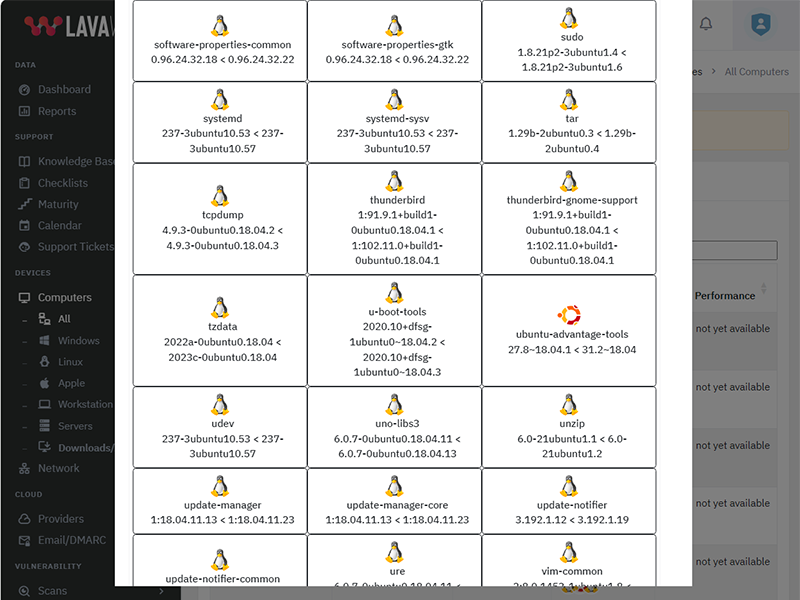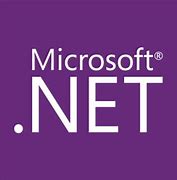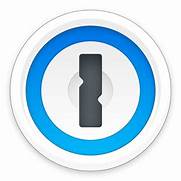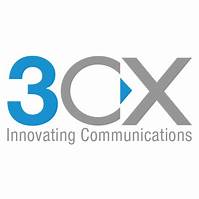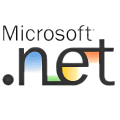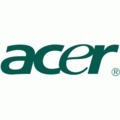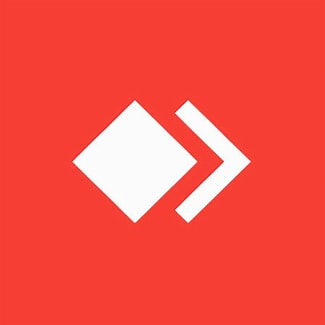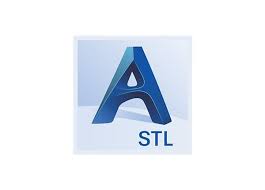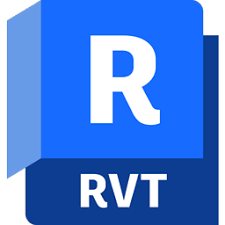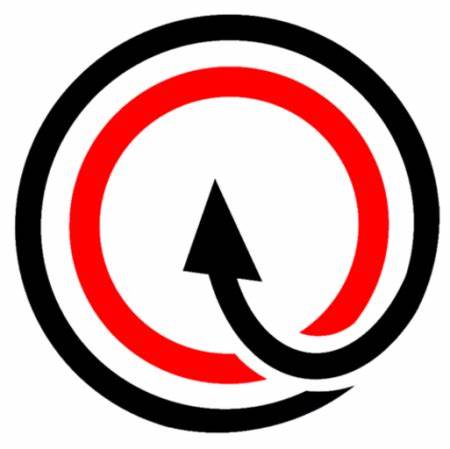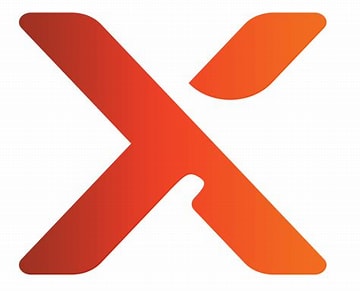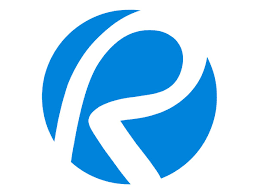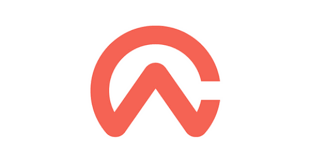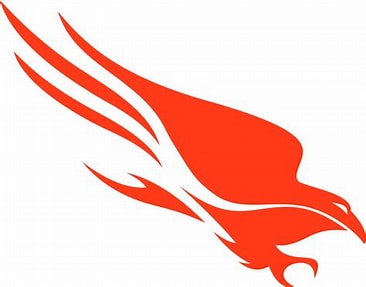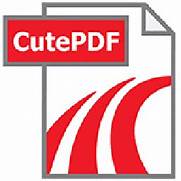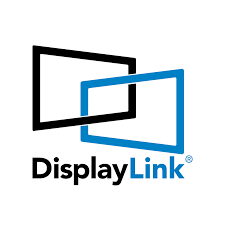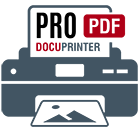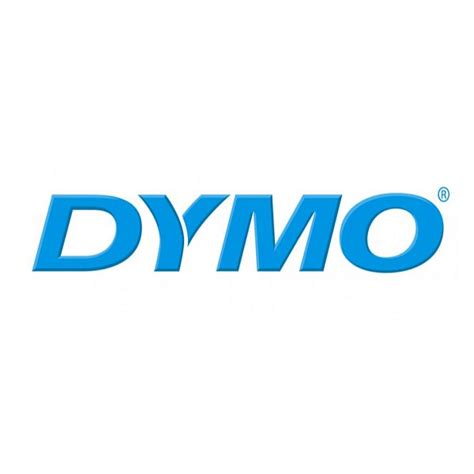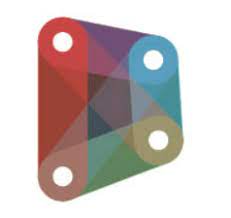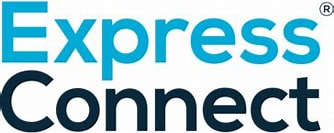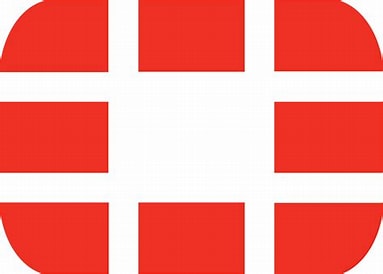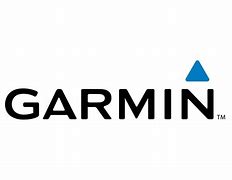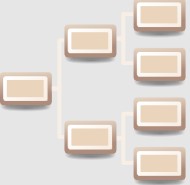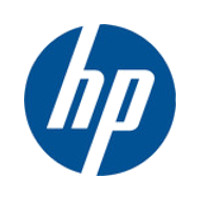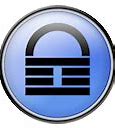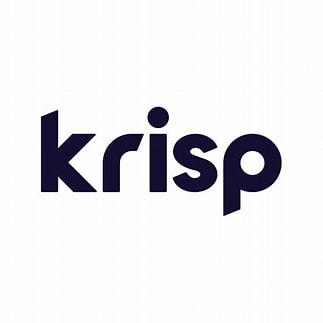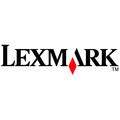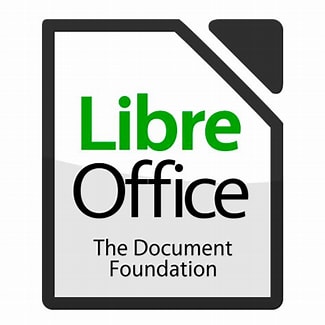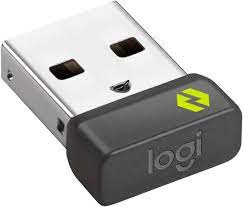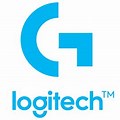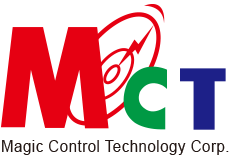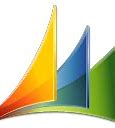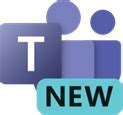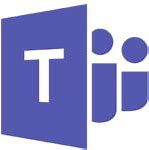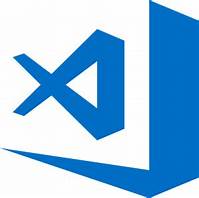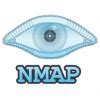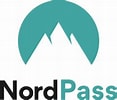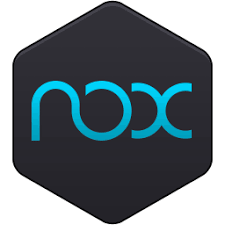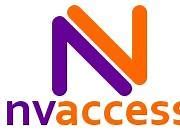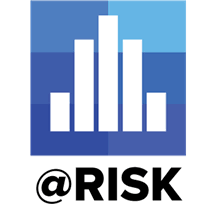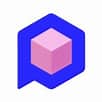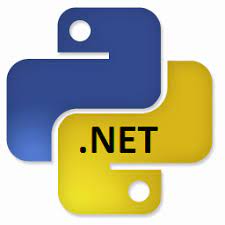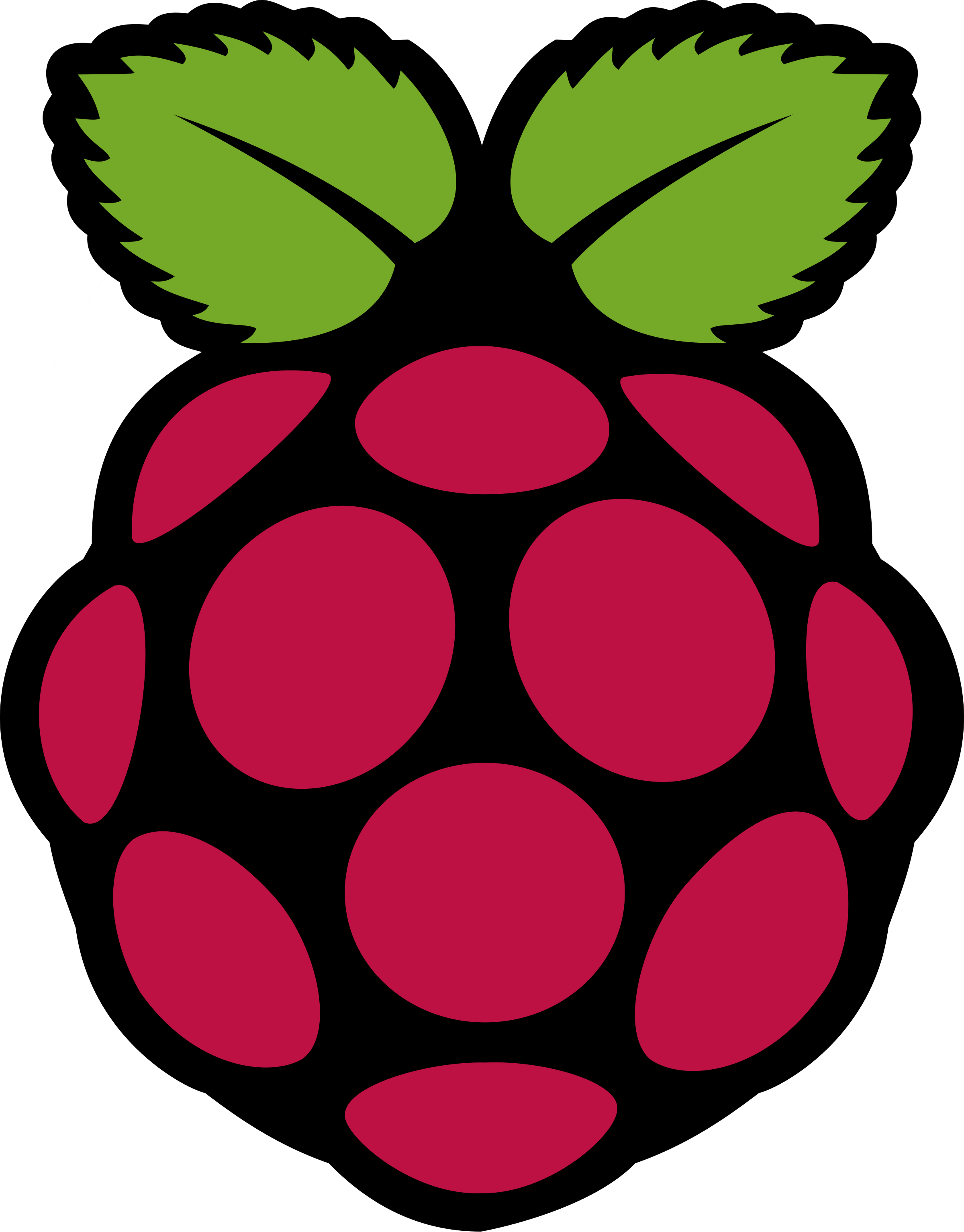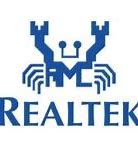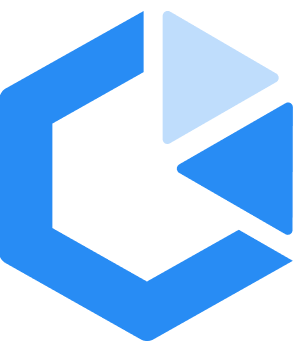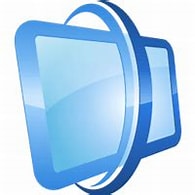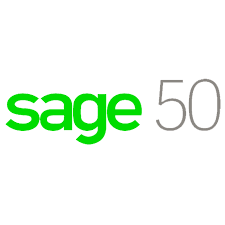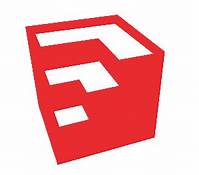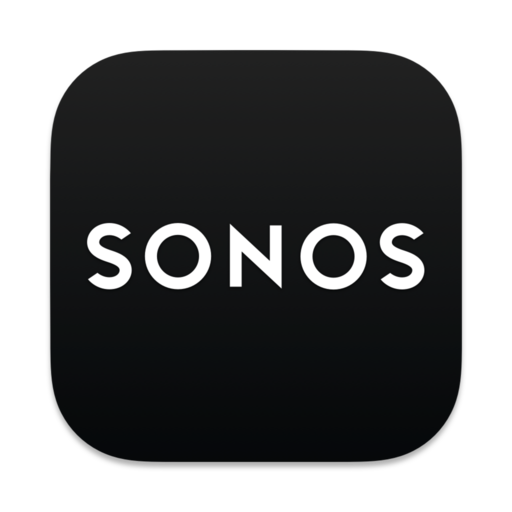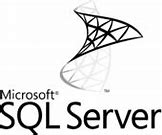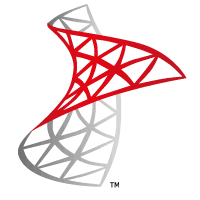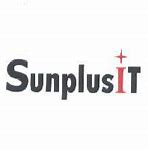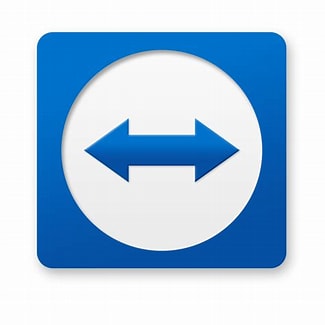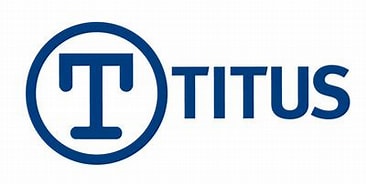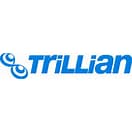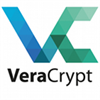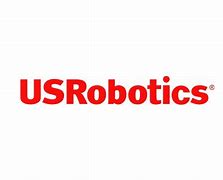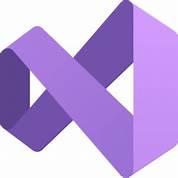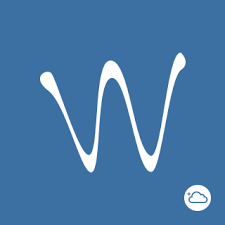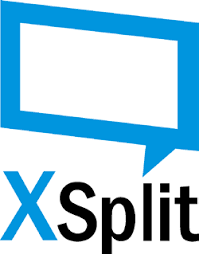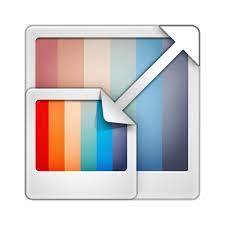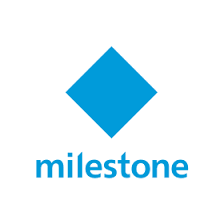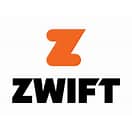
Update Skype for Business to version 16.0.18129.20158
What patches are you missing?
CVE Vulnerabilities for Skype for Business
| CVE | Published | Severity | Details | Exploitability | Impact | Vector |
| CVE‑2024‑20673 | 2024‑02‑13 18:15:48 | HIGH (8) | Microsoft Office Remote Code Execution Vulnerability | 2 | 6 | LOCAL |
| CVE‑2022‑33633 | 2022‑07‑12 23:15:12 | HIGH (7) | Skype for Business and Lync Remote Code Execution Vulnerability | 1 | 6 | NETWORK |
| CVE‑2020‑1025 | 2020‑07‑14 23:15:11 | CRITICAL (10) | An elevation of privilege vulnerability exists when Microsoft SharePoint Server and Skype for Business Server improperly handle OAuth token validation. An attacker who successfully exploited the vulnerability could bypass authentication and achieve improper access. To exploit this vulnerability, an attacker would need to modify the token. The update addresses the vulnerability by modifying how Microsoft SharePoint Server and Skype for Business Server validate tokens. | 4 | 6 | NETWORK |
| CVE‑2019‑1490 | 2019‑12‑10 22:15:18 | MEDIUM (5) | A spoofing vulnerability exists when a Skype for Business Server does not properly sanitize a specially crafted request, aka 'Skype for Business Server Spoofing Vulnerability'. | 2 | 3 | NETWORK |
| CVE‑2019‑1084 | 2019‑07‑15 19:15:18 | MEDIUM (4) | An information disclosure vulnerability exists when Exchange allows creation of entities with Display Names having non-printable characters. An authenticated attacker could exploit this vulnerability by creating entities with invalid display names, which, when added to conversations, remain invisible. This security update addresses the issue by validating display names upon creation in Microsoft Exchange, and by rendering invalid display names correctly in Microsoft Outlook clients., aka 'Microsoft Exchange Information Disclosure Vulnerability'. | 0 | 0 | NETWORK |
| CVE‑2019‑0624 | 2019‑01‑17 18:29:00 | LOW (4) | A spoofing vulnerability exists when a Skype for Business 2015 server does not properly sanitize a specially crafted request, aka "Skype for Business 2015 Spoofing Vulnerability." This affects Skype. | 0 | 0 | NETWORK |
| CVE‑2018‑8546 | 2018‑11‑14 01:29:01 | MEDIUM (4) | A denial of service vulnerability exists in Skype for Business, aka "Microsoft Skype for Business Denial of Service Vulnerability." This affects Office 365 ProPlus, Microsoft Office, Microsoft Lync, Skype. | 0 | 0 | NETWORK |
| CVE‑2018‑8311 | 2018‑07‑11 00:29:02 | MEDIUM (7) | A remote code execution vulnerability exists when Skype for Business and Microsoft Lync clients fail to properly sanitize specially crafted content, aka "Remote Code Execution Vulnerability in Skype For Business and Lync." This affects Skype, Microsoft Lync. | 0 | 0 | NETWORK |
| CVE‑2018‑8238 | 2018‑07‑11 00:29:01 | HIGH (9) | A security feature bypass vulnerability exists when Skype for Business or Lync do not properly parse UNC path links shared via messages, aka "Skype for Business and Lync Security Feature Bypass Vulnerability." This affects Skype, Microsoft Lync. | 0 | 0 | NETWORK |
| CVE‑2017‑8696 | 2017‑09‑13 01:29:10 | HIGH (8) | Windows Uniscribe in Microsoft Windows Server 2008 SP2 and R2 SP1; Windows 7 SP1; Office 2007 SP3; Office 2010 SP2; Word Viewer; Office for Mac 2011 and 2016; Skype for Business 2016; Lync 2013 SP1; Lync 2010; Lync 2010 Attendee; and Live Meeting 2007 Add-in and Console allows an attacker to execute code remotely via a specially crafted website or a specially crafted document or email attachment, aka "Microsoft Graphics Component Remote Code Execution." | 0 | 0 | NETWORK |
| CVE‑2017‑8695 | 2017‑09‑13 01:29:10 | LOW (3) | Windows Uniscribe in Microsoft Windows Server 2008 SP2 and R2 SP1; Windows 7 SP1; Windows 8.1; Windows Server 2012 Gold and R2; Windows RT 8.1; Windows 10 Gold, 1511, 1607, 1703, and Server 2016; Office 2007 SP3; Office 2010 SP2; Word Viewer; Office for Mac 2011 and 2016; Skype for Business 2016; Lync 2013 SP1; Lync 2010; Lync 2010 Attendee; and Live Meeting 2007 Add-in and Console allows an attacker to obtain information to further compromise a user's system via a specially crafted document or an untrusted webpage, aka "Graphics Component Information Disclosure Vulnerability." | 0 | 0 | NETWORK |
| CVE‑2017‑8676 | 2017‑09‑13 01:29:10 | LOW (2) | The Windows Graphics Device Interface (GDI) in Microsoft Windows Server 2008 SP2 and R2 SP1; Windows 7 SP1; Windows 8.1; Windows Server 2012 Gold and R2; Windows RT 8.1; Windows 10 Gold, 1511, 1607, 1703, and Server 2016; Office 2007 SP3; Office 2010 SP2; Word Viewer; Office for Mac 2011 and 2016; Skype for Business 2016; Lync 2013 SP1; Lync 2010; Lync 2010 Attendee; and Live Meeting 2007 Add-in and Console allows an authenticated attacker to retrieve information from a targeted system via a specially crafted application, aka "Windows GDI+ Information Disclosure Vulnerability." | 0 | 0 | LOCAL |
| CVE‑2017‑11786 | 2017‑10‑13 13:29:01 | HIGH (9) | Skype for Business in Microsoft Lync 2013 SP1 and Skype for Business 2016 allows an attacker to steal an authentication hash that can be reused elsewhere, due to how Skype for Business handles authentication requests, aka "Skype for Business Elevation of Privilege Vulnerability." | 0 | 0 | NETWORK |
| CVE‑2017‑0283 | 2017‑06‑15 01:29:02 | HIGH (9) | Uniscribe in Windows Server 2008 SP2 and R2 SP1, Windows 7 SP1, Windows 8.1, Windows Server 2012 Gold and R2, Windows RT 8.1, Windows 10 Gold, 1511, 1607, Windows Server 2016, Microsoft Office 2007 SP3, Microsoft Office 2010 SP2, Microsoft Office Word Viewer, Microsoft Lync 2013 SP1, Skype for Business 2016, Microsoft Silverlight 5 Developer Runtime when installed on Microsoft Windows, and Microsoft Silverlight 5 when installed on Microsoft Windows allows a remote code execution vulnerability due to the way it handles objects in memory, aka "Windows Uniscribe Remote Code Execution Vulnerability". This CVE ID is unique from CVE-2017-8528. | 0 | 0 | NETWORK |
| CVE‑2017‑0281 | 2017‑05‑12 14:29:07 | HIGH (9) | Microsoft Office 2007 SP3, Office 2010 SP2, Office 2013 SP1, Office 2016, Office Online Server 2016, Office Web Apps 2010 SP2,Office Web Apps 2013 SP1, Project Server 2013 SP1, SharePoint Enterprise Server 2013 SP1, SharePoint Enterprise Server 2016, SharePoint Foundation 2013 SP1, Sharepoint Server 2010 SP2, Word 2016, and Skype for Business 2016 allow a remote code execution vulnerability when the software fails to properly handle objects in memory, aka "Office Remote Code Execution Vulnerability". This CVE ID is unique from CVE-2017-0261 and CVE-2017-0262. | 0 | 0 | NETWORK |
| CVE‑2017‑0108 | 2017‑03‑17 00:59:03 | HIGH (9) | The Windows Graphics Component in Microsoft Office 2007 SP3; 2010 SP2; and Word Viewer; Skype for Business 2016; Lync 2013 SP1; Lync 2010; Live Meeting 2007; Silverlight 5; Windows Vista SP2; Windows Server 2008 SP2 and R2 SP1; and Windows 7 SP1 allows remote attackers to execute arbitrary code via a crafted web site, aka "Graphics Component Remote Code Execution Vulnerability." This vulnerability is different from that described in CVE-2017-0014. | 0 | 0 | NETWORK |
| CVE‑2017‑0073 | 2017‑03‑17 00:59:02 | MEDIUM (4) | The Graphics Device Interface (GDI) in Microsoft Windows Vista SP2; Windows Server 2008 SP2 and R2 SP1; Windows 7 SP1; Windows 8.1; Windows Server 2012 Gold and R2; Windows RT 8.1; and Windows 10 Gold, 1511, and 1607 allows remote attackers to obtain sensitive information from process memory via a crafted web site, aka "Windows GDI+ Information Disclosure Vulnerability." This vulnerability is different from those described in CVE-2017-0060 and CVE-2017-0062. | 3 | 1 | NETWORK |
| CVE‑2017‑0060 | 2017‑03‑17 00:59:02 | MEDIUM (6) | The Graphics Device Interface (GDI) in Microsoft Windows Vista SP2; Windows Server 2008 SP2 and R2 SP1; Windows 7 SP1; Windows 8.1; Windows Server 2012 Gold and R2; Windows RT 8.1; and Windows 10 Gold, 1511, and 1607 allows remote attackers to obtain sensitive information from process memory via a crafted web site, aka "GDI+ Information Disclosure Vulnerability." This vulnerability is different from those described in CVE-2017-0060 and CVE-2017-0062. | 2 | 4 | LOCAL |
| CVE‑2016‑7182 | 2016‑10‑14 02:59:33 | HIGH (10) | The Graphics component in Microsoft Windows Vista SP2; Windows Server 2008 SP2 and R2 SP1; Windows 7 SP1; Windows 8.1; Windows Server 2012 Gold and R2; Windows RT 8.1; Windows 10 Gold, 1511, and 1607; Office 2007 SP3; Office 2010 SP2; Word Viewer; Skype for Business 2016; Lync 2013 SP1; Lync 2010; Lync 2010 Attendee; and Live Meeting 2007 Console allows attackers to execute arbitrary code via a crafted True Type font, aka "True Type Font Parsing Elevation of Privilege Vulnerability." | 0 | 0 | NETWORK |
| CVE‑2016‑3396 | 2016‑10‑14 02:59:32 | HIGH (9) | Graphics Device Interface (aka GDI or GDI+) in Microsoft Windows Vista SP2; Windows Server 2008 SP2 and R2 SP1; Windows 7 SP1; Windows 8.1; Windows Server 2012 Gold and R2; Windows RT 8.1; Windows 10 Gold, 1511, and 1607; Office 2007 SP3; Office 2010 SP2; Word Viewer; Skype for Business 2016; Lync 2013 SP1; Lync 2010; Lync 2010 Attendee; and Live Meeting 2007 Console allows remote attackers to execute arbitrary code via a crafted embedded font, aka "GDI+ Remote Code Execution Vulnerability." | 0 | 0 | NETWORK |
| CVE‑2016‑3304 | 2016‑08‑09 21:59:14 | HIGH (9) | The Windows font library in Microsoft Windows Vista SP2, Windows Server 2008 SP2 and R2 SP1, Windows 7 SP1, Office 2007 SP3, Office 2010 SP2, Word Viewer, Skype for Business 2016, Lync 2013 SP1, Lync 2010, Lync 2010 Attendee, and Live Meeting 2007 Console allows remote attackers to execute arbitrary code via a crafted embedded font, aka "Windows Graphics Component RCE Vulnerability," a different vulnerability than CVE-2016-3303. | 0 | 0 | NETWORK |
| CVE‑2016‑3303 | 2016‑08‑09 21:59:13 | HIGH (9) | The Windows font library in Microsoft Windows Vista SP2, Windows Server 2008 SP2 and R2 SP1, Windows 7 SP1, Office 2007 SP3, Office 2010 SP2, Word Viewer, Skype for Business 2016, Lync 2013 SP1, Lync 2010, Lync 2010 Attendee, and Live Meeting 2007 Console allows remote attackers to execute arbitrary code via a crafted embedded font, aka "Windows Graphics Component RCE Vulnerability," a different vulnerability than CVE-2016-3304. | 0 | 0 | NETWORK |
| CVE‑2016‑3301 | 2016‑08‑09 21:59:11 | HIGH (9) | The Windows font library in Microsoft Windows Vista SP2; Windows Server 2008 SP2 and R2 SP1; Windows 7 SP1; Windows 8.1; Windows Server 2012 Gold and R2; Windows RT 8.1; Windows 10 Gold, 1511, and 1607; Office 2007 SP3; Office 2010 SP2; Word Viewer; Skype for Business 2016; Lync 2013 SP1; Lync 2010; Lync 2010 Attendee; and Live Meeting 2007 Console allows remote attackers to execute arbitrary code via a crafted embedded font, aka "Windows Graphics Component RCE Vulnerability." | 0 | 0 | NETWORK |
| CVE‑2016‑3263 | 2016‑10‑14 02:59:10 | MEDIUM (5) | Graphics Device Interface (aka GDI or GDI+) in Microsoft Windows Vista SP2; Windows Server 2008 SP2 and R2 SP1; Windows 7 SP1; Windows 8.1; Windows Server 2012 Gold and R2; Windows RT 8.1; Windows 10 Gold, 1511, and 1607; Office 2007 SP3; Office 2010 SP2; Word Viewer; Skype for Business 2016; Lync 2013 SP1; Lync 2010; Lync 2010 Attendee; and Live Meeting 2007 Console allows remote attackers to bypass the ASLR protection mechanism via unspecified vectors, aka "GDI+ Information Disclosure Vulnerability," a different vulnerability than CVE-2016-3262. | 0 | 0 | NETWORK |
| CVE‑2016‑3262 | 2016‑10‑14 02:59:08 | MEDIUM (5) | Graphics Device Interface (aka GDI or GDI+) in Microsoft Windows Vista SP2; Windows Server 2008 SP2 and R2 SP1; Windows 7 SP1; Windows 8.1; Windows Server 2012 Gold and R2; Windows RT 8.1; Windows 10 Gold, 1511, and 1607; Office 2007 SP3; Office 2010 SP2; Word Viewer; Skype for Business 2016; Lync 2013 SP1; Lync 2010; Lync 2010 Attendee; and Live Meeting 2007 Console allows remote attackers to bypass the ASLR protection mechanism via unspecified vectors, aka "GDI+ Information Disclosure Vulnerability," a different vulnerability than CVE-2016-3263. | 0 | 0 | NETWORK |
| CVE‑2016‑3209 | 2016‑10‑14 02:59:07 | MEDIUM (5) | Graphics Device Interface (aka GDI or GDI+) in Microsoft Windows Vista SP2; Windows Server 2008 SP2 and R2 SP1; Windows 7 SP1; Windows 8.1; Windows Server 2012 Gold and R2; Windows RT 8.1; Windows 10 Gold, 1511, and 1607; Office 2007 SP3; Office 2010 SP2; Word Viewer; Skype for Business 2016; Lync 2013 SP1; Lync 2010; Lync 2010 Attendee; Live Meeting 2007 Console; .NET Framework 3.0 SP2, 3.5, 3.5.1, 4.5.2, and 4.6; and Silverlight 5 allows remote attackers to bypass the ASLR protection mechanism via unspecified vectors, aka "True Type Font Parsing Information Disclosure Vulnerability." | 0 | 0 | NETWORK |
| CVE‑2016‑0145 | 2016‑04‑12 23:59:12 | HIGH (9) | The font library in Microsoft Windows Vista SP2; Windows Server 2008 SP2 and R2 SP1; Windows 7 SP1; Windows 8.1; Windows Server 2012 Gold and R2; Windows RT 8.1; Windows 10 Gold and 1511; Office 2007 SP3 and 2010 SP2; Word Viewer; .NET Framework 3.0 SP2, 3.5, and 3.5.1; Skype for Business 2016; Lync 2010; Lync 2010 Attendee; Lync 2013 SP1; and Live Meeting 2007 Console allows remote attackers to execute arbitrary code via a crafted embedded font, aka "Graphics Memory Corruption Vulnerability." | 0 | 0 | NETWORK |
| CVE‑2015‑6108 | 2015‑12‑09 11:59:06 | HIGH (9) | The Windows font library in Microsoft Windows Vista SP2; Windows Server 2008 SP2 and R2 SP1; Windows 7 SP1; Windows 8; Windows 8.1; Windows Server 2012 Gold and R2; Windows RT Gold and 8.1; Office 2007 SP3; Office 2010 SP2; Word Viewer; .NET Framework 3.0 SP2, 3.5, 3.5.1, 4, 4.5, 4.5.1, 4.5.2, and 4.6; Skype for Business 2016; Lync 2010; Lync 2013 SP1; Live Meeting 2007 Console; and Silverlight 5 allows remote attackers to execute arbitrary code via a crafted embedded font, aka "Graphics Memory Corruption Vulnerability." | 0 | 0 | NETWORK |
| CVE‑2015‑6107 | 2015‑12‑09 11:59:05 | HIGH (9) | The Windows font library in Microsoft Windows Vista SP2, Windows Server 2008 SP2 and R2 SP1, Windows 7 SP1, Windows 8, Windows 8.1, Windows Server 2012 Gold and R2, Windows RT Gold and 8.1, Windows 10 Gold and 1511, Office 2007 SP3, Office 2010 SP2, Word Viewer, Skype for Business 2016, Lync 2010, Lync 2013 SP1, and Live Meeting 2007 Console allows remote attackers to execute arbitrary code via a crafted embedded font, aka "Graphics Memory Corruption Vulnerability." | 0 | 0 | NETWORK |
| CVE‑2015‑6106 | 2015‑12‑09 11:59:03 | HIGH (9) | The Windows font library in Microsoft Windows Vista SP2, Windows Server 2008 SP2, Office 2007 SP3, Office 2010 SP2, Word Viewer, Skype for Business 2016, Lync 2010, Lync 2013 SP1, and Live Meeting 2007 Console allows remote attackers to execute arbitrary code via a crafted embedded font, aka "Graphics Memory Corruption Vulnerability." | 0 | 0 | NETWORK |
| CVE‑2015‑6061 | 2015‑11‑11 11:59:33 | MEDIUM (4) | Cross-site scripting (XSS) vulnerability in Microsoft Skype for Business 2016, Lync 2010 and 2013 SP1, Lync 2010 Attendee, and Lync Room System allows remote attackers to inject arbitrary web script or HTML via an instant-message session, aka "Server Input Validation Information Disclosure Vulnerability." | 0 | 0 | NETWORK |
| CVE‑2015‑2503 | 2015‑11‑11 11:59:18 | HIGH (9) | Microsoft Access 2007 SP3, Excel 2007 SP3, InfoPath 2007 SP3, OneNote 2007 SP3, PowerPoint 2007 SP3, Project 2007 SP3, Publisher 2007 SP3, Visio 2007 SP3, Word 2007 SP3, Office 2007 IME (Japanese) SP3, Access 2010 SP2, Excel 2010 SP2, InfoPath 2010 SP2, OneNote 2010 SP2, PowerPoint 2010 SP2, Project 2010 SP2, Publisher 2010 SP2, Visio 2010 SP2, Word 2010 SP2, Pinyin IME 2010, Access 2013 SP1, Excel 2013 SP1, InfoPath 2013 SP1, OneNote 2013 SP1, PowerPoint 2013 SP1, Project 2013 SP1, Publisher 2013 SP1, Visio 2013 SP1, Word 2013 SP1, Excel 2013 RT SP1, OneNote 2013 RT SP1, PowerPoint 2013 RT SP1, Word 2013 RT SP1, Access 2016, Excel 2016, OneNote 2016, PowerPoint 2016, Project 2016, Publisher 2016, Visio 2016, Word 2016, Skype for Business 2016, and Lync 2013 SP1 allow remote attackers to bypass a sandbox protection mechanism and gain privileges via a crafted web site that is accessed with Internet Explorer, as demonstrated by a transition from Low Integrity to Medium Integrity, aka "Microsoft Office Elevation of Privilege Vulnerability." | 0 | 0 | NETWORK |


Get the IT stuff done that nobody wants to do.
Patch more applications, achieve compliance, and prevent problems while reducing stress with Lavawall®.
Security First
A security tool by security auditors. From Passkeys and Argon2i to source validation and MVSP principles, Lavawall® has you covered.
Constant Improvement
More features and more security added nearly every day.
More patchable programs added every week
While Ninite and other patching tools have had the same patch offerings for decades, we're monitoring stats to keep adding the most useful prorgams.
Details matter
From wrapping TLS communications in extra encryption and uninstalling remote support tools when they aren't used to detailed statistical analysis of system and network performance, Lavawall® goes in-depth.
Chromium extensions and Notification Validation
Lavawall® goes beyond patches and breach detection. We also monitor for risky Chromium extensions and allowed notifications that might be part of a phishing or ransomware attack.
Extended Cloud Security
Extend the security features of Cloudflare, Microsoft, Google, Sophos, and other cloud providers to create a Lavawall® of protection
Secure Remote Management
Even if you used breached remote management tools like ScreenConnect through Lavawall® when it was vulnerable, your computers stayed safe because we only install the agent when it needs to be used.
Integrations and automation
Easily deploy, monitor, and analyze security tools like Huntress, AutoElevate, and Sophos. Magically gain details from ZenDesk, ConnectWise, Datto, Panorama9, Microsoft, and Google.
Human and automated support
Get immediate fixes, user notifications, admin notifications -- and even security-certified human level 3 support when our advanced statistical analysis confirms a problem or anomaly.
| 2024‑10‑30 | 0.12.8.195 | Mac update refinements |
| 2024‑10‑25 | 0.12.3.190 | |
| 2024‑10‑21 | 0.12.0.187 | Macos implementaiton, linux and windows improvements |
| 2024‑10‑16 | 0.11.128.186 | Linux stats and system information improvements, improvements for application shutdown |
| 2024‑09‑12 | 0.11.113.171 | CPU Optimizations and Packages reliability improvements |
| 2024‑09‑05 | 0.11.106.164 | Phased deployment enhancements |
| 2024‑09‑04 | 0.11.103.161 | |
| 2024‑09‑02 | 0.11.102.160 | CPU Optimizations and Packages reliability improvements |
| 2024‑08‑30 | 0.11.99.157 | CPU Optimizations and Packages reliability improvements |
| 2024‑08‑29 | 0.11.98.156 | CPU utilization and console event optimization |
| 2024‑08‑28 | 0.11.97.155 | Reliability to detect unusual updates like redistributables. |
| 2024‑08‑27 | 0.11.96.154 | |
| 2024‑08‑26 | 0.11.95.153 | Faster response for reboot requests |
| 2024‑08‑20 | 0.11.92.150 | Additional package upgrade pre-requisites |
| 2024‑08‑15 | 0.11.89.147 | |
| 2024‑08‑06 | 0.11.87.145 | |
| 2024‑07‑26 | 0.11.83.141 | Add resiliency for MAC duplicates and uptime |
| 2024‑07‑25 | 0.11.82.140 | Changes to facilitate cross-platform use. Bitlocker and Windows key refinements |
| 2024‑07‑15 | 0.11.80.138 | Antivirus and temperature added to configuration checks |
| 2024‑07‑15 | 0.11.79.137 | Add configuration checks for execution policy and secure boot |
| 2024‑07‑11 | 0.11.77.135 | load balancing refinements |
| 2024‑07‑10 | 0.11.76.134 | Add additional load balancing and data residency capabilities, add randomness to recurring task timings to decrease server load |
| 2024‑07‑05 | 0.11.74.132 | changes to graph and residual work on user imporsonation |
| 2024‑07‑04 | 0.11.73.131 | Add configuration checks for execution policy and secure boot. |
| 2024‑07‑03 | 0.11.72.130 | Enhanced event log monitoring |
| 2024‑07‑02 | 0.11.71.129 | Add details to Windows updates, enhanced risk metrics for application patches |
| 2024‑06‑19 | 0.11.65.123 | Update resiliancy and garbage collection |
| 2024‑06‑13 | 0.11.60.118 | Enhanced logging |
| 2024‑06‑12 | 0.11.55.113 | Include the primary drive serial number; MAC addresses for built-in wireless, Bluetooth, and ethernet into the device hash to restore uninstalled and reinstalled devices in cases where the motherboard serial is not unique |
| 2024‑06‑07 | 0.11.54.112 | Patch and package uninstall data addition |
| 2024‑06‑05 | 0.11.47.105 | refine per-user registry application listing |
| 2024‑06‑02 | 0.11.45.103 | uninstall and reinstall refinements, refine local logging, refine self-update and uninstall timing |
| 2024‑05‑30 | 0.11.21.79 | various bug fixes and improvements |
| 2024‑05‑28 | 0.11.16.74 | Error logging, registration, and uninstall improvements. |
| 2024‑05‑24 | 0.11.14.72 | applied changes for devices and login commands, changes for registration as well |
| 2024‑05‑22 | 0.11.13.71 | Add Windows computer model, improve Operating System parsing |
| 2024‑05‑21 | 0.11.11.69 | Added additional states for Windows update, flexibility for non-standard program file configurations, support for network diagrams at the switch level, details for Windows editions |
| 2024‑05‑21 | 0.11.10.68 | Add specific cases for Defender patterns and Composer versions. |
| 2024‑05‑17 | 0.11.3.61 | Change Log storage location to c:\program files\Lavawall |
| 2024‑05‑17 | 0.11.1.59 | self-update improvements. |
| 2024‑05‑16 | 0.8.0.55 | error log reporting and management. |
| 2024‑05‑15 | 0.7.0.54 | Websocket resiliency improvements |
| 2024‑05‑09 | 0.6.0.53 | Error log reporting and management. |
| 2024‑05‑01 | 0.5.44.52 | Even more improvements to scheduler |
| 2024‑04‑24 | 0.5.41.49 | Install compatibility with Sandbox |
| 2024‑04‑22 | 0.5.21.29 | Project property changes to enable automated compilation with new features. |
| 2024‑04‑20 | 0.5.20.28 | Add motherboard serial number and company reassignment |
| 2024‑04‑11 | 0.5.4.12 | Automate release notes as part of build process |
| 2024‑04‑03 | 0.5.3.11 | Websocket and service enhancements |
| 2024‑03‑21 | 0.5.2.10 | Enhance zip file validation |
NOTE: changes after June 2024 are incorportated into the Windows Changelog as the codebases for Windows, Linux, and Mac were combined
| 2024‑05‑20 | 253 | Added cleanup of old .json files during a re-install |
| 2024‑05‑13 | 252 | Added apt-get update to install |
| 2024‑05‑06 | 248 | Allow restart to use /var/run/reboot-required if needrestart is not installed |
| 2024‑04‑22 | 239 | Improve internal update and version tracking |
| 2024‑04‑15 | 235 | Add support for Yum packages |
| 2024‑04‑08 | 233 | Align patching with Windows patch reporting |
| 2024‑04‑02 | 228 | Add support for needrestart |
| 2024‑03‑04 | 224 | Schedule restarts |
| 2024‑03‑25 | 221 | Add support for apt packages |
| 2024‑03‑18 | 212 | Implement release management |
| 2024‑03‑11 | 202 | Add user login monitoring |
| 2024‑03‑04 | 189 | Enhance installation reliability |
| 2024‑02‑26 | 187 | Exapand triggers to identify if the instance needs to be restarted |
| 2024‑02‑19 | 146 | Improve compatibility for non-AWS instances |
| 2024‑02‑14 | 138 | Add self-uninstall capabilities |
| 2024‑02‑12 | 135 | Enhance scheduling flexibility |
| 2024‑02‑07 | 132 | Add kernel version tracking |
| 2024‑02‑05 | 124 | Add device hash to cryptographic self-update script validation |
| 2024‑01‑29 | 107 | Enhance encryption of patch data |
| 2024‑01‑22 | 98 | Improve how available storage is calculated |
| 2024‑01‑15 | 97 | Move initial tasks from installation file to sub scripts |
| 2024‑05‑21 | 91 | Improve multi-distribution compatibility |
| 2024‑05‑21 | 79 | Improve encryption reliability |
| 2023‑12‑11 | 68 | Enhance cryptographic validation of new scripts before updating |
| 2023‑11‑20 | 62 | Add inner layer of AES encryption in case TLS inspection doesn't allow for a secure connection |
| 2023‑11‑27 | 56 | Additional base cases for resiliancy |
| 2023‑11‑20 | 54 | Additional headers added to authentication process during installation. |
| 2023‑11‑20 | 53 | Enhanced key management |
| 2023‑11‑15 | 51 | Add insecure installation parameter to allow installation in environments with TLS inspection or other machine-in-the-middle situations. |
| 2023‑11‑06 | 42 | Enhance redundant encryption during installation. |
| 2023‑10‑30 | 33 | Improve install-over compatibility |
| 2023‑10‑23 | 18 | Add reboot configuration and scheduling |
| 2023‑10‑23 | 17 | Add self-updating functionality. |
| 2023‑10‑16 | 15 | Add Linux patching information for apt |
| 2023‑10‑09 | 14 | Collect system information |
| 2023‑10‑09 | 13 | Add Linux distribution information |
| 2023‑09‑30 | 12 | Add memory monitoring |
| 2023‑09‑30 | 10 | Add hardware information |
| 2023‑09‑23 | 9 | Add AWS information |
| 2023‑09‑23 | 8 | Add customized schedule capability for configuration updates |
| 2023‑09‑23 | 7 | Add support for package monitoring using package and dpkg logs |
| 2023‑09‑16 | 6 | Add storage data configuration gathering |
| 2023‑09‑16 | 5 | Add CPU information |
Lavawall® was built from the ground up with these concerns and the Minimum Viable Secure Product requirements in mind.
Some of the controls we implemented include:
- PassKeys as the preferred primary authentication at no additional cost
- Single Sign-on using modern, maintained, and industry-standard protocols for all customers at no additional cost
- Multi-Factor Authentication as a non-negotiable default
- Encrypting communications the same way as TLS again within the TLS tunnel, so we can allow TLS inspection without breaking like Huntress or disclosing security vulnerabilities to eavesdroppers.
- Encouraging external vulnerability reports and customer testing
- Passwords checked against popular disclosed passwords, hashed before they leave your computer, and then stored using Argon2id
- Not requiring the use of passwords at all. We consider them a temporary backup authentication in case you can't use passkeys or SSO.
Lavawall® databases and front-end systems are hosted with AWS in Montréal, Québec, Canada.
We send emails through AWS in Ireland and dedicated servers in Calgary, Alberta, Canada.
We send text messages for additional identity verification through Twilio in the United States.
We store executables and pass requests through Cloudflare at your nearest edge location.
We use Cloudflare for risk management, turnstile, and web application firewall services.
We use LeadPages for landing pages.
We use Google and Facebook for analytics on our public-facing pages, but they do not have access to the console.
We integrate with third-party tools, such as Microsoft, Google, Huntress, Screen Connect, Axcient, and Datto in their respective locations. However, you must initiate these integrations through single sign-on or by enabling them in your Lavawall® console.
Active security by design
Lavawall® is under active development with the latest release on
5+
Interfaces
350+
Monitored Applications
7+
System Metrics
Actively manage your IT with Lavawall®
Patching
Updates Beyond Windows
Lavawall® prevents the 80% of breaches and failed audits due to missing patches and updates.
You can reduce application patching delays from 67 days to nearly immediate with the 350+ applications that Lavawall® monitors and patches.
Patch release monitoring
Monitor everything without having to select packages or “managed applications”
Patch impact classification
Standard and optional Windows patches
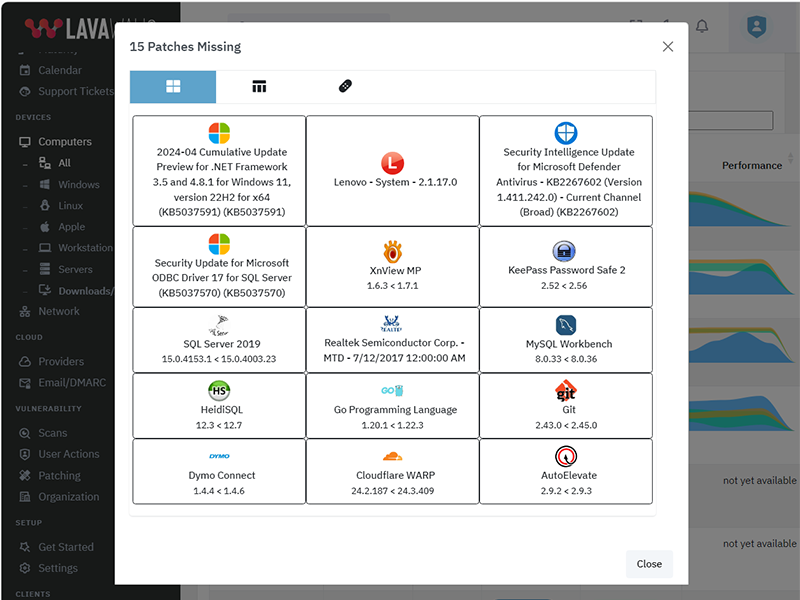
The above listing includes products that Lavawall® monitors through public information and/or proprietary statistical analysis.
Although we do have a partner relationship with some of the listed products and companies, they do not necessarily endorse Lavawall® or have integrations with our systems.
Learn More

Flexible Term; Flexible Service
Flexibility for your dynamic business
You need to get your arms around compliance and security and don't want to get locked into “high watermark” monthly invoices or multi-year contracts.
Pay-as-you-need monthly pricing
DIY, full management, and coaching options
CMMI, PCI, SOC2, Canadian Cybersecurity, Minimum Viable Secure Product, and other compliance support
Choose the plan that's right for you
Simple pricing. No hidden fees. Advanced features for you business.
Month
Annual
Get 2 months free with Annual!
DIY
Security-focused RMM
C$3.25 /computer/Month
C$32.50 /computer/Year
-
1 computer
or 1 of the following cloud integrations:
AWS, Axcient, Connectwise, Datto, Google, Huntress, M365, Sophos Central integrations
(each integration counts as 1 computer) -
50+ application patches
-
30-day Logs
-
Security configuration monitoring
-
Anomaly detection
-
CMMI, MVSP, CyberCanda compliance
-
Lavawall® support
-
Sophos MDR: C$13.50/desktopSophos MDR: C$162/desktop
-
Huntress: C$5.40/deviceHuntress: C$64.80/device
-
Available white-label support for end users
-
Level 3+ IT support for IT
-
Weekly IT coaching sessions
Managed Security & Support
Unlimited end-user support
C$160 /user/Month
C$1,600 /user/Year
-
1 computer/user
Additional devices charged at DIY prices -
AWS, Axcient, Connectwise, Datto, Google, Huntress, M365, Sophos Central integrations
-
350+ application patches
-
90-day Logs
-
Security configuration monitoring
-
Anomaly detection
-
CMMI, MVSP, CyberCanda compliance
-
Lavawall® support
-
Sophos MDR Essentials
-
Huntress
-
White-label email and phone support for end users
-
Level 3+ IT support for IT
-
Weekly IT coaching sessions
-
Automatic discount and upgrade to Support & Coaching after 15 users
Support & Coaching
Improve your IT performance
$2,250 /Month
$22,500 /Year
-
25 computers included
Additional computers charged at DIY prices -
AWS, Axcient, Connectwise, Datto, Google, Huntress, M365, Sophos Central integrations
-
350+ application patches
-
90-day Logs
-
Security configuration monitoring
-
Anomaly detection
-
CMMI, MVSP, CyberCanda compliance
-
Lavawall®-only support
-
Sophos MDR Essentials
-
Huntress
-
White-label email and phone support for 15 users included Additional: C$150/user Additional: C$1,500/user
-
L3 IT support for IT
-
Weekly IT coaching sessions
Frequently Asked Questions
If you can not find answer to your question in our FAQ, you can always contact us or email us. We will answer you shortly!
General Questions
- Two years after a missing Plex Media Server led to the LastPass breach, the
Remote Monitorign and Management (RMM) tools availabel for Manged IT Service Providers (MSPs)
still didn't monitor for it.
Going through industry-specific applications, we noticed many were missing from the big RMM and patching providers. MSPs, insurance providers, and organizations that put their cleints at risk need to know about these risks, which lead to the largest number of critical audit findings and breaches - After 20 years of writing the same audit findings about system configurations, Payment Card Industry (PCI) compliance, and missing patches, our technical co-founder wanted to make it easier fo avoid these findings
- The existing risk visibility tools for insurance underwriters took a shallow look at Internet-facing risks. They -- along with all businesses -- need a deeper view of the threats that could actually lead to breaches.
- Domain risks
- Operating System (OS) patches
- Application patches
- Network vulnerabilities
- Cloud vulnerabilities
- OS configurations
- Axcient*
- Cloudflare
- Connectwise Screen Connect
- Datto RMM
- FreshDesk*
- Huntress
- Microsoft 365
- Panorama9
- ZenDesk
You can use your own logo for the console and notifications. You can also use a CNAME to automatically brand your console.
Note: you cannot currently re-proxy the CNAME to Lavawall® through Cloudflare.
Lavawall® supports the following operating systems:
Lavawall® does not currently support non systemd distributions, such as Devuan, Artix Linux, PCLinuxOS, OpenWRT, and DD-WRT. However, we will support them by the end of 2024.
In June 2024, we combined the Windows and Linux systems for a consistent experience. This added support for RedHat and MacOS.
Privacy & Security
However, we do allow passwords and use passwords as part of the zero-knowledge encryption for your clients' sensitive data, such as Bitlocker keys and Personally-Identifiable Information (PII).
These passwords use Argon2id slow hashes with individual salts and peppers.
We have added an additional secure tunnel that mimics the TLS process within the public TLS tunnel. This extra tunnel provides authentication and privacy for the workstations and the Lavawall® servers to prevent attacks such as the one that took down Solar Winds.
Remote access is not enabled for read-only and audit situations.
Get In Touch
Have a quick question and don't want to talk? Send us a quick note with the form below and we'll reply within one business day.
NW Calgary:
ThreeShield Information Security Corporation
600 Crowfoot Crescent N.W., Suite 340
Calgary, Alberta
T3G 0B4
SE Calgary:
ThreeShield Information Security Corporation
105, 11500 - 29th St. SE
Calgary, Alberta
T2Z 3W9
Canada

